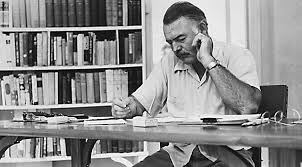Jean Said Makdisi. Image via middleeastmonitor.com.
Jean Said Makdisi’s essay “Crisis, With a Glossary of Terms Used in Times of Crisis” (from her collection Beirut Fragments) captures life in war torn Beirut during the 1980s. The madness of war is brought home not through descriptions of mangled bodies but rather through snippets of what people do during such situations. And one thing people try to do is to go on with their lives.
Thus, her essay is filled with opposites. She and her family ride out mortar fire in a bomb shelter, and the next day, she drives to her office at the university, where she meets with fellow professors about the Freshman English program.
The following scene, filled with opposites, evokes an especially striking and unexpectedly convincing portrait of people trapped in war.
One night, the phone rings. “Aren’t you coming? We’re waiting for you. Have you forgotten that you are invited to dinner?”
“You’re joking. First of all, I had forgotten about it. And if I had remembered I would have assumed you had canceled.”
“Why should we cancel? Everyone’s here. Come on: We’re waiting for you.”
“But—“ “Come on; there is nothing tonight —ma fi shi.”
I confer hurriedly with my husband. At first we agree not to go. It is madness to go out, and who feels like a dinner party at a time like this, anyway? A few minutes later, we shrug at each other. Why not? We have to live, to grasp enjoyment when it comes.
The party is hilarious. After the tension of the last few days, a sense of abandon overcomes us. I am relieved that there is not political discussion of causes, effects, and apportionment of blame; none of that confidential exchange of highly significant gossip and anecdote; no prognoses; no quarrels between politically opposed partisans. I am sick of this talk. Everything changes around us but this never ends, going on and on, amid knots of bent heads and earnest faces. Only once does the subject of the war come up. A professor of political science whose opinion is taken seriously says, “It’s all over. This ceasefire is going to hold.” An explosion of machine guns and mortars answers his words even as he utters them. He raises his glass in a mock toast. “Vive la guerre,” he says, joining in the laughter, recognizing with the rest of us the futility of trying to make sense of what is happening.
As the evening progresses, so does the battle outside. We eat our dinner tyring to keep our minds off the noise. At one point, one of the guests pauses, looks around at the apparent mindlessness of the proceedings, and then says quietly to me, “Someone should record this madness. Someone should write all of this down.”
Finally, we can no longer ignore the situation as shells begin to fall nearby. We hastily take our leave and make our way home through the empty streets. By the time we get back, the battle is in full swing. We barely have time to collect the children and get to the shelter. For a short time, the glow of our evening’s enjoyment strengthens us, but this soon fades as the gravity of the situation deepens.
—“Crisis, with Glossary of Terms Used in Times of Crisis”
From Beirut Fragments by Jean Said Makdisi, pp. 43-44
The second half of the essay is written like a phrase book for a wartime Beirut. Thus the phrase ma fi shi in the above excerpt is explained . . .
shu fi? What’s going on?
fi shi? Anything wrong?
fi shi Something
ma fi shi Nothing
These apparently innocuous phrases are actually part of a life-saving code that Lebanese have developed in the face of sudden violence. You might be driving along the bustle of the city, or on a scenic mountain road, and come to a traffic jam or a deserted stretch of road. Either of these could spell trouble. “Shu fi? Fi shi? (“What’s going on? Something?”) you ask a passerby or a fellow driver. “Ma fi shi” (“Nothing”). “It’s just a traffic jam or an empty road,” he answers. Or else “fi shi” (“Something”)—he has heard shouts or shots or, at any rate, something untoward—he is not quite sure what. The clinching “Al’ane” might come, and the responding question, “Bain min wa min?” (“Between whom and whom?”) might lead to your identifying the elements involved. On the other hand it might not, and you could go home, having come within an inch of your life, none the wiser.
“Ma fi shi” may also be used ironically, as when all hell has broken loose but you say, “Ma fi shi,” and smile bitterly.
—“Crisis, with Glossary of Terms Used in Times of Crisis”
From Beirut Fragments by Jean Said Makdisi, p. 50
Strange how scenes of dinner parties emerging and then ending amidst battles and the ironic exchanges of fellow commuters capture something of the true terror of war. Jean Said Makdisi’s insights into how war feels for those caught up in it turns on the very idea of how oppositions collide.
Thank you for reading.

























